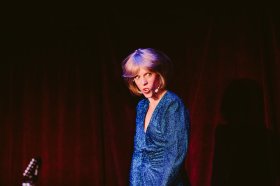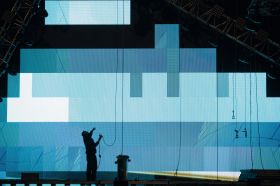Although the Requiem by Maurice Duruflé was the second of the two items on this Melbourne Symphony Orchestra program, it deserved to be the title for the whole concert.
Calling in the considerable resources of the Melbourne Symphony Orchestra Chorus and two illustrious soloists, the Requiem proved to be a worthy work, lending warmth and harmony to its plainsong beginnings. Conductor Tadaaki Otaka may appear restrained in his gestures but he was an excellent choice for the whole program, respecting (but also at times reining in) the power of orchestra and chorus combined.
The choir was ‘mixed’ rather than in sections. This gave the impression that the work mostly strove for a unity of sound in which the various parts were less important than the whole. From a plainsong-like beginning the Introit moved to harmonies that marked it as a 20th century work, the sopranos for a time soaring above the massed sound.
The Kyrie developed into a great mass of sound from the choir and orchestra, inviting inevitable comparisons with the much-loved Requiem by compatriot Gabriel Faure, written more than 50 years earlier. MSO Chorus Master Jonathan Grieves-Smith describes the latter as ‘a light and lovely gift from a fine tune-smith’, but is concerned that the Duruflé’s ‘ecclesiastical flavour …[is] … perhaps its emotional straightjacket’.
Grieves-Smith deserves all the more credit, then, for the emotional power the Chorus lent to the Requiem, as in the third section, ‘Domine, Jesu Christe’. It began with the ominous sound of the lower strings before female voices sang ‘Libera me’ introducing a great burst of sound from both orchestra and choir.
The first soloist, baritone Jose Carbo, with minimal accompaniment at first, lent his powerful and expressive voice to the succeeding Hostias.
The Sanctus’s lush and romantic sound developed into the Hosanna’s massive climax (complete with brass), before tapering off for ‘In excelsis’ and a return to plainsong. Mezzo Deborah Humble then stood up for the Pie Jesu, delivering it in her strong, sure voice, but with an awareness of the words and consequent light and shade.
After the quiet, beautiful Agnus Dei and return to plainsong for Lux Eterna, there was a change of mood for the always-dramatic point in a requiem: Libera Me. After Brett Kelly’s trombone entry it took very little time for the music to swell to a climax, augmented by Carbo’s return to underline the drama of the words (‘day of torment, day of wrath, calamity and misery’). The sopranos then met the challenge of a high entry for a change of mood with ‘Requiem aeternam’, followed by a solemn reprise of Libera Me, the music swelling then falling away.
Perhaps inevitably, a harp introduced the final movement, In Paradisum, the sopranos again to the fore with a lovely introduction (with minimal accompaniment). The gentle ending was in contrast with the noisy applause that followed, well deserved by both orchestra and chorus.
It might seem that I have left very little space for a review of the first work on the program, Brahms’ Piano Concerto No.1 in D minor, Op.15, in which the soloist was Garrick Ohlssohn. This is unfortunately intentional, not because the performance was unworthy of comment (it was greeted with a number of cheers) but because my position close to the stage made it impossible to ignore the sound of the piano.
The Steinway, only a metre or so away from me, sounded quite harsh and even ‘tinny’ at times, clearly no fault of the pianist, but probably of the sound emanating from several sources including through the wooden frame under the piano.
Famous Romantic concertos like this one often ride on their opening, closing and middle slow movement. Ohlssohn’s technique and familiarity with the work ensured that both the declamatory first movement and brilliant climax were more than satisfying.
The slow movement at times suffered from a lack of delicacy and charm, despite strong orchestral support. Then, more than once, musicality triumphed over the instrument as the pianist played some soft, floating arpeggios and chords in harmony with the orchestra.
Brahms’ melodies can’t help but ‘sing’ given half the chance, but for me, the performance was the lesser of the two items presented on the night, and my score of four stars is for the second work.
Rating: 4 stars out of 5
Duruflé Requiem
Melbourne Symphony Orchestra
Tadaaki Otaka – conductor
Garrick Ohlsson – piano
Deborah Humble – mezzo-soprano
José Carbó – baritone
Melbourne Symphony Orchestra Chorus
Brahms Piano Concerto No.1
Duruflé Requiem
Hamer Hall, Melbourne
15 & 17 November
Robert Blackwood Hall, Clayton
16 November





